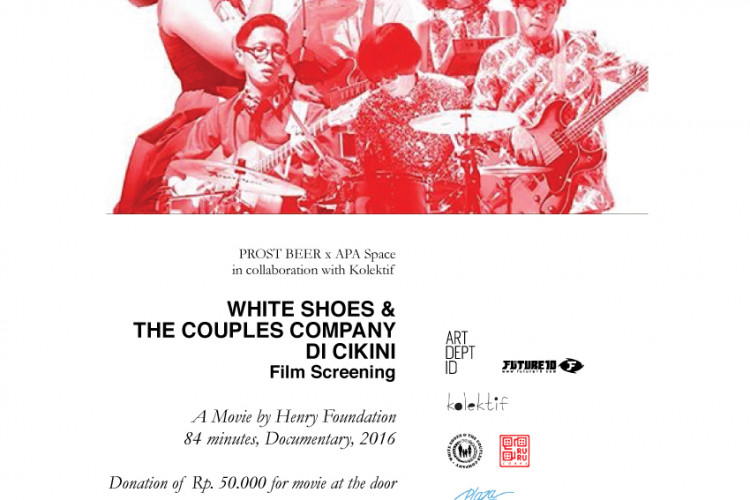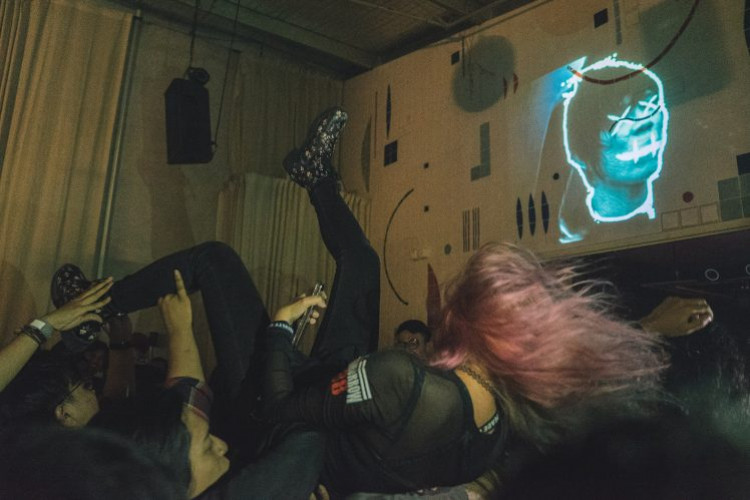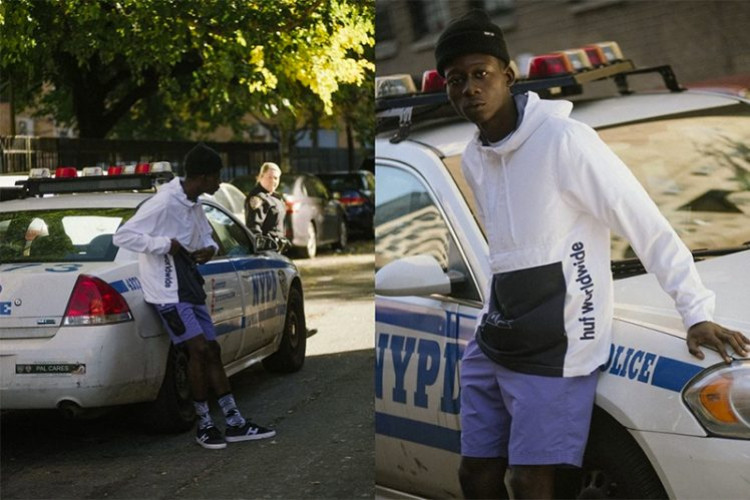Photography and Culture with Zhuang Wubin
Athina Ibrahim (A) Interview with Zhuang Wubin (Z)
by Ken Jenie
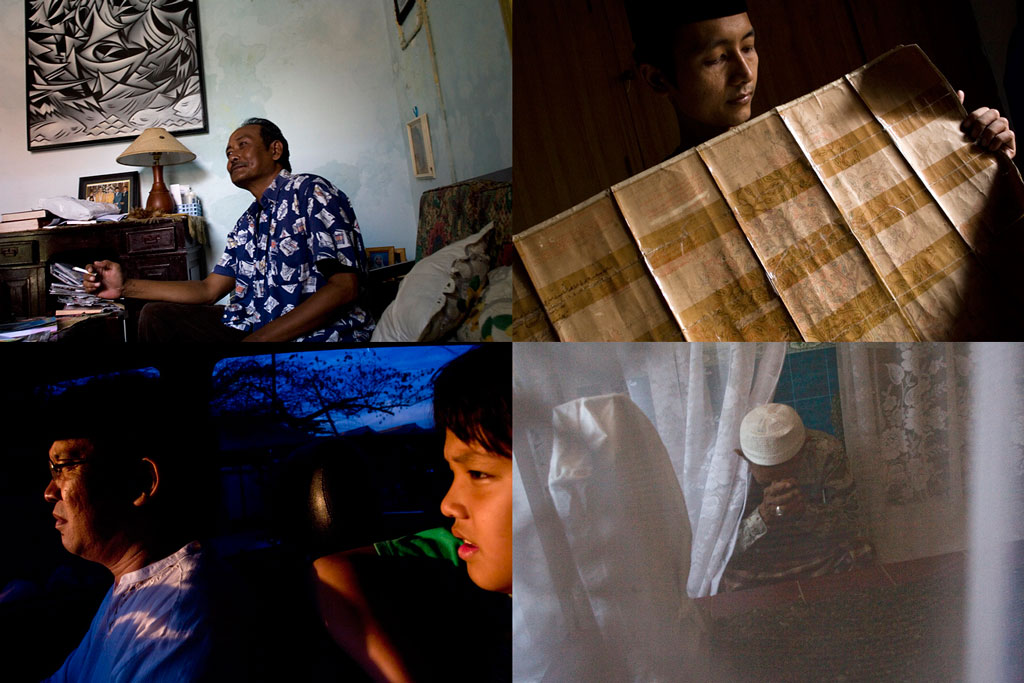
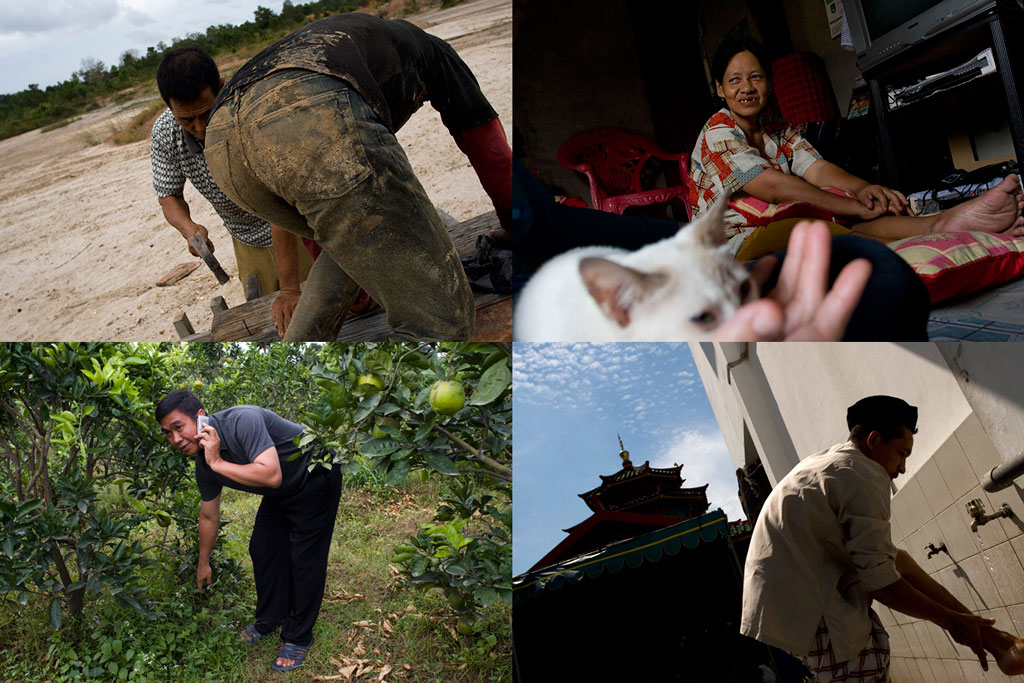
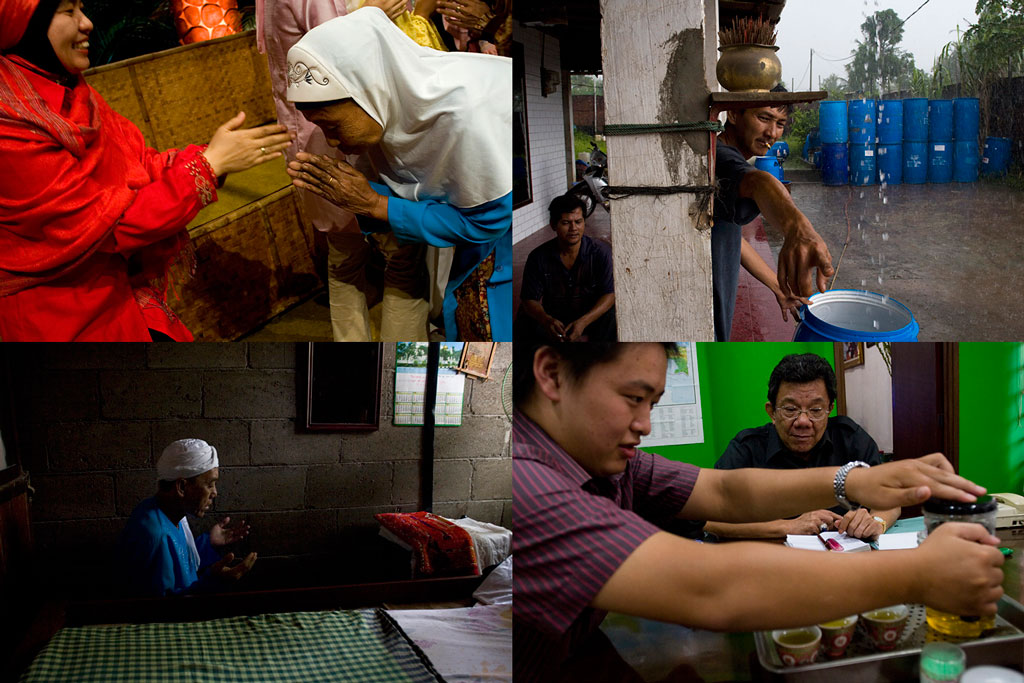
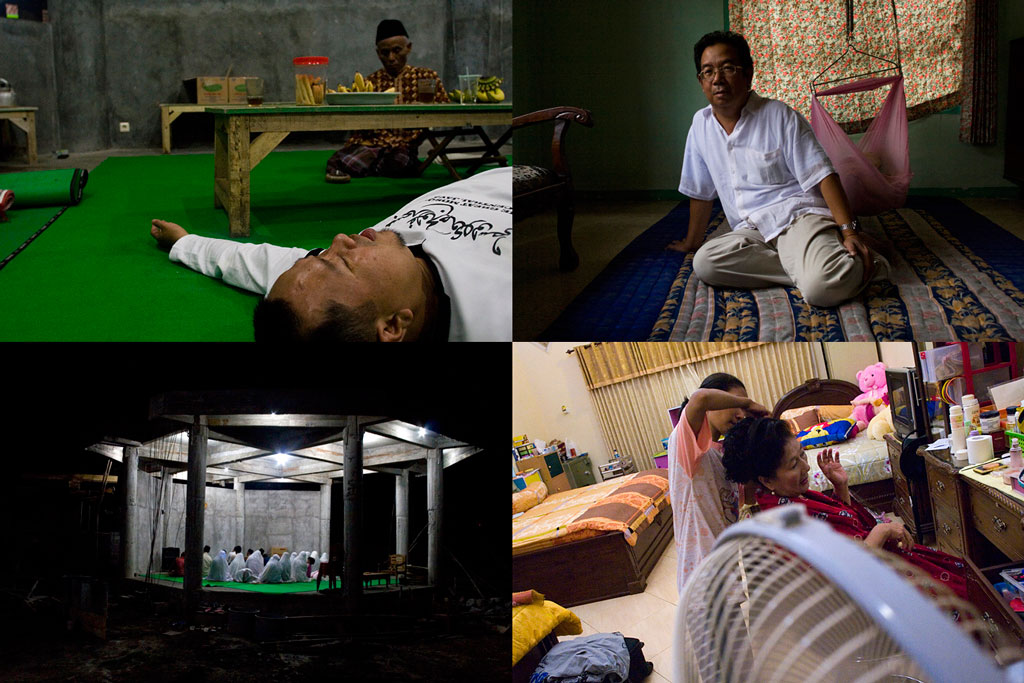
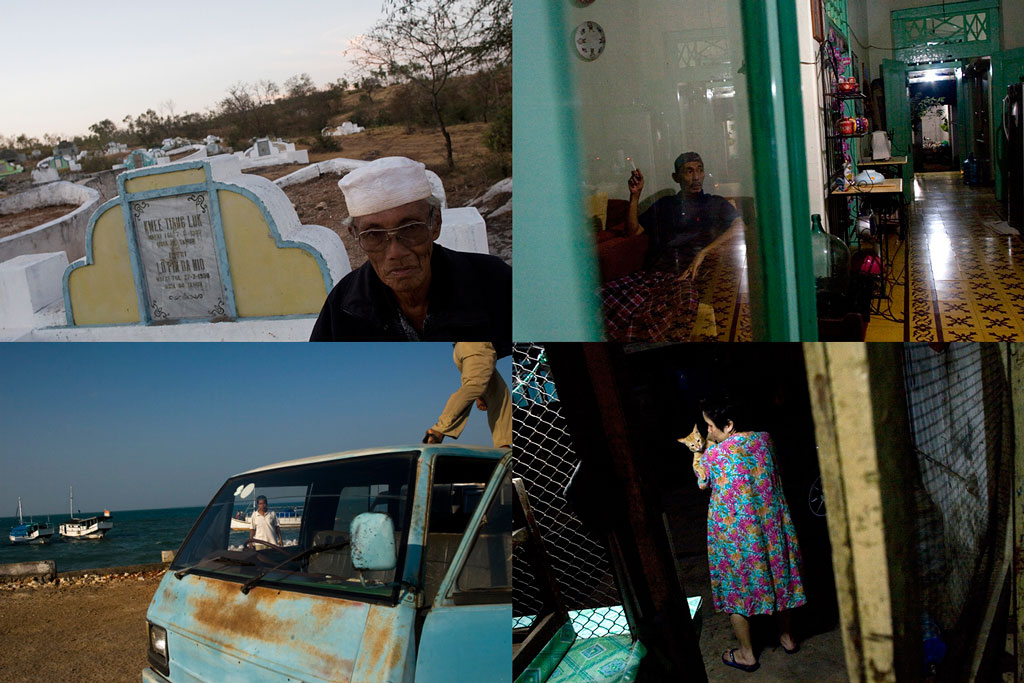
A
Regarding the book ‘Chinese Muslim in Indonesia’, Chinese Muslims are considered a minority group in Indonesia, what drew you to raise this theme?
Z
As a photographer, I always try to challenge myself. By 2007, I had more or less decided to do an in-depth work that would take several years. I had always wanted to do something in Indonesia. But I needed a specific topic. The Chinese in West Kalimantan intrigued me. But I had also heard about the Chinese Muslims in Indonesia. In the end, when several people stepped forward to help me get in touch with the community leaders, I decided to go along with it.
A
In Indonesia, Chinese and Islam seem to be paradoxical stereotypes, how has the general public responded to the book (Chinese Muslim in Indonesia) so far?
Z
In terms of sales, the response has been encouraging. When I exhibited the work at Galeri CCCL Surabaya in 2008, there was quite a bit of coverage. The idea that Chinese can be Muslims is paradoxical to Indonesians, pribumi or otherwise, partly because of the colonial policies, which segregated the Chinese from the pribumi. The governments of Sukarno and Suharto perpetuated some of these policies. The arrival of non-Muslim Totoks in the last century further obscured the fact that Chinese conversion to Islam is nothing new. Let’s not forget, the oldest surviving mosque in China is the Huaisheng Mosque in Guangzhou. It is over 1,300 years old.
A
Going through your blog, we understand that your interest in photography and research undertakes the Chinese communities in Southeast Asia, could you tell us what you are trying to achieve in this regard?
Z
I’m not trying to achieve anything. I know my strengths and weaknesses. I will never be a famous photographer because I don’t have the ability to sell or market myself. And I won’t make a lot of money with this kind of work. But if I’m prepared to spend years pursuing my photographic practice, it has to involve something that I’m fascinated and obsessed with. This is why I’m drawn to the Chinese communities in Southeast Asia. As a Singaporean brought up in a Mandarin-speaking family, there are things that I pick up quite naturally when I’m in these Chinese communities. I’m an insider but I’m also an outsider, since the tendency to assimilate is ever present among the Chinese in Southeast Asia.
A
What fascinating encounters have you gathered from the observation of Chinese communities in Southeast Asia. Is there a common thread that links these Chinese communities in the different nations?
Z
These are broad questions that cannot be easily answered. People like Prof. Claudine Salmon or Prof. Charles Coppel spend half their lives writing about the Chinese. And in both cases, they are known primarily as experts on the Indonesian Chinese. When we consider the fact that Indonesian Chinese account for only 1.06 percent of the country’s population, we realize that your questions, even if we limit them to Indonesia, are extremely hard to answer. In fact, I always reference the plurality of the Indonesian Chinese with the word ‘communities’. It is inaccurate to see the Indonesian Chinese as one homogenous ‘community’.
If we examine the Indonesian Chinese, we will see that their identities are informed by many things: place of residence (rural vs. urban; Java, Sumatra, Madura, Kalimantan etc; areas with significant Chinese presence vs. areas with very little Chinese presence), education (level of education; local vs. overseas; late colonial era vs. independence era), religion (religiosity; which religion), occupation (employee vs. employer), economic status, Totok vs. Peranakan, language (Dutch, English, Bahasa Indonesia, majority language of the place of residence (Balinese; Sundanese, Madurese, Javanese etc), Mandarin, Chinese dialect), affinity with “Chinese” culture (how close they are—or feel they are—with “Chinese” culture, bearing in mind that the idea of “Chinese” culture, like “Indonesian” culture, is imagined and always fluid) etc. The list goes on and on. And the permutations divide them further.
That’s why I caution against making sweeping statements. Some people like to say: “Indonesian Chinese are exclusive and they don’t mingle.” But that statement is as uninformed as saying: “Pribumi are lazy.”
For years, Edward Said spoke against those American writers who describe the Middle East as an area full of indistinguishable Islamists, when it is in fact a region of diverse religions, languages and ethnicities. These writers are no different from the people who make those aforementioned statements.
Coming back to your questions, the experiences of the first-generation Chinese migrants who arrived in Southeast Asia are very similar to the first-generation pribumi migrants who moved to Holland or Singapore. There is always this tension between maintaining her or his “original” culture and adopting the “new” culture of the destination. The hybridity of Southeast Asian cultures is born in these “tensions”. And this borrowing, adapting and localizing of cultures has been taking place in Southeast Asia for centuries.
During the Ming Dynasty, for instance, there were Javanese, Malays, Arabs, Indians, Bugis, Chinese, British, Spanish and Dutch living in the cosmopolitan cities along the pasisir in Java. Southeast Asia has long been globalized, even before the term “globalization” is invented. As members of these cosmopolitan cities, the experiences of these Chinese were no different from the other communities. They brought their distinctive cultures and assimilated.This is the picture we get when we study the Chinese Muslim communities in Indonesia during the early colonial era.Across Southeast Asia, this fusion of cultures can be seen in wayang, traditional crafts, foods and architecture. For someone like me who speaks very little Bahasa, I can easily understand the names of various food ingredients in Indonesia because these Bahasa terms are in fact Hokkien in origin. Prof. Salmon has written about the loan words that Bahasa Indonesia has borrowed from Chinese dialects over the centuries. In Thailand, the pronunciation of numbers sounds almost like Teochew, the majority dialect of the Thai Chinese. Even without any knowledge of Thai, I picked up the numbers within a few minutes when I first visited Bangkok many years back.
Within Southeast Asia, elements of Chinese cultures have been localized over the centuries, until it is no longer productive to say what is local or what is Chinese. Unfortunately, in Indonesia, there has been a political will, since the 18th century, to demarcate and segregate the Chinese and the pribumi. But in Cambodia, where the Chinese have rarely been prosecuted specifically, we can see how Chinese culture has been localized by Khmer culture. Altars dedicated to various “Chinese” deities can be easily found in Khmer homes. During the annual Chinese New Year procession in Phnom Penh, the Khmers can also be seen receiving the blessings from the mediums.
I think this is the recurring theme. We can locate the experiences of the Chinese in Southeast Asia between the polarity of assimilation and their “Chineseness”. It is not one or the other. Almost always, it is located along the spectrum and is further differentiated by the factors that I have raised concerning the Indonesian Chinese: education, language, religion etc.
As a third-generation Hokkien Chinese born in Singapore, there are elements that I find familiar and alien in the Chinatowns across Southeast Asia. I’m sure the feeling is quite common among Chinese travellers whenever they visit other Chinatowns. Similarly, a Malaysian Malay will feel the same way when she or he visits Palembang, for instance.
As a photographer, I’m drawn to this conflicting sense of familiarity and alienation. But I have very little interest to play out that tension by juxtaposing, for instance, red lanterns against a statue of Colonel Sanders. This is too cliché. I prefer to dig, to look at the nuances of the Chinese experiences. Unfortunately, such images are not always literal or exotic enough for editors, curators and some viewers.
By itself, photography cannot articulate these nuances. In one of the photographs that I made in 2008 at Pancoran, Jakarta, a pribumi man is seen against a poster advertising a new Bahasa magazine titled Chinatown. This is not a strong image. But there is this juxtaposition, which is obvious enough. Some people found the image intriguing. I wonder if they felt a sense of injustice, since the Chinese in Jakarta had, not long ago, been targeted during the 1998 riots by, presumably, the pribumi. But some of the Chinese residents at Petak Sembilan, Pancoran, also recalled how the pribumi who lived beside them had defended the area and prevented it from being looted.
I didn’t get the chance to speak to the man whom I photographed. And I wonder what he did in 1998. Perhaps for some, that photograph reinforces the perception that pits the pribumi against the Chinese. I’m not pretending that nothing happened in 1998. But how does pitting one community against the other help in our understanding of the malaise in 1998? This is why I feel that photography can sometimes be quite limiting. Words are important.
At that time, I also befriended Madam Lim, a second-generation resident of Petak Sembilan and an avid follower of the Beijing Olympics on cable TV. She was obviously proud that China could host the worldwide sporting event. But she also spoke without a hint of irony about her anger with the China government for refusing to act during the 1998 riots. There is something poignant about that conversation but I have no means of translating it into a photograph. Perhaps in this sense, I am a failed photographer.
A
You’ve worked with one of Indonesia’s renowned Photographer, Oscar Motuloh in the book – Ten Chinatowns of Southeast Asia, what was this collaboration like?
Z
Apart from being a photographer, I’m also a researcher specializing in contemporary photography in Southeast Asia (ASEAN). I first met Oscar Motuloh in 2004 and have written about his work on several occasions. Since then, I have always visited him at Antara Photojournalism Gallery (GFJA) whenever I am in Jakarta. Ten Chinatowns of Southeast Asia is actually based on my first photographic monograph, Chinatowns in a Globalizing Southeast Asia. Published in 2009, the monograph is the result of a commission from political scientist Leo Suryadinata, who is the director of Chinese Heritage Centre (CHC) in Singapore. CHC is a research centre in Nanyang Technological University (NTU) focusing on the Chinese communities outside of China. When the institution had the money to produce a book, Prof. Leo thought of me, knowing that I had already shot some photographs in the Chinatowns of Southeast Asia. The book also features write-ups by researcher Ang Cher Kiat. When the book was out, Oscar found the work interesting enough and on his part, he gathered various sponsors in Indonesia and put together Ten Chinatowns of Southeast Asia. The exhibition took place on February 2010 at GFJA. With the support of people like Guntur Santoso, Oscar published a catalogue, my second monograph, in Bahasa to go with the exhibition. As a photographer who is a curator, Oscar is naturally sensitive to imageries. On my part as a photographer, I’m quite happy to let the curator pick and play with my work. I’m not sure if there’s a process of negotiation between Oscar and me. I trust his judgment.
A
Your body of work is more of a documentary, reportage and portraits of cultural scene and the people, is this work you value most?
Z
I have a working process. When you see my photographs, you will label them accordingly. That’s fine. I don’t shoot or show a lot. Everything that I put out is of great value to me. And if I make a connection with my viewers, that will be a bonus.
A
Would you ever consider a more commercial photography project? And what would and would you not photograph?
Z
It depends on what you mean by “commercial”. Ray Bachtiar once said to me that photojournalism is the most “commercial” form of photography in Indonesia. I can see where he comes from. “Commercial” work means that someone is paying directly for your effort. Or you can be like John Clang, who once told me that there is no such thing as “commercial” work in NYC. The saints over there call it “commissioned” work. Looking beyond this exercise in vocabulary, it is true that some forms of photojournalism and documentary photography fit this definition of “commercial” work. But there are many painters and conceptual artists who can also be deemed “commercial” because they know very well what collectors buy and they produce the same kinds of works repeatedly. These are the one-trick-ponies.
Personally, I have hardly done any “commercial” or “commissioned” work. But the way I see it is quite simple. I have a rather specific range of interests as a photographer. And my process is usually research driven, which takes time. I enjoy digging into the things that I investigate and at times, that desire is stronger than producing a “beautiful” photograph. Nevertheless, I’m sure there will be instances where my personal interests will fit the needs of my clients, which may be institutions, editors or collectors. But I’m also not living in the clouds. I need to makan (eat). That’s why I’ll never know what I will not photograph. I think it is better to know what I want to shoot.
A
In photography, what is your thought process/creative process and what point of view would you use to raise a particular issue?
Z
I’m trained as a journalist but I’m not sure if what we get in the papers today can be seen as journalism. Nevertheless, the journalistic process of going through past research, conducting interviews and checking facts is still pretty robust. This is a strategy that I fall back upon whenever necessary. But the photographic medium is more than a journalistic tool. It is fast and efficient. And so, you can hit the streets and improvise like a jazz musician. It can also be a “slow” medium. And you can slow it down by digging deeper into the subject matter, adopting an intellectual process that is not outcome-driven, or simply working with an older, slower camera. In short, there is no single approach. But as always, you go out as a human being and respond to the situation.
A
Between being a photographer and writer, what do you find most challenging?
Z
Both aspects of my work pose great challenges. On a personal level, I sometimes find writing excruciating. It feels as though I’m tearing my gut out. But maybe I’m just not a good writer. As a writer, I don’t think you can hide. You face your readers with your words. You can’t go to Photoshop and fix your work. You can’t make it trendy. But in photography, you can. That’s the difference.
Photography is a visual medium. Beauty and aesthetics can sometimes, though not always, mask the weaknesses of your photographic process. I use the terms “beauty” and “aesthetics” in a very general way. Beauty and aesthetics can also cloud a photographer’s lack of understanding in relation to her or his subject matter. This doesn’t mean that photography is easier. But as a photographer, it is easier to impress someone out there, especially when photographic meaning is always unstable. This probably has something to do with the fact that we are visual animals.
A
Who or what are your main inspirations towards of your work?
Z
My inspirations are varied. If I list them down here, it will look like a grocery list and people will think that I’m just being pretentious.
A
Lastly, what camera and lens do you mostly use?
Z
For my work on Chinatowns and the Chinese Muslims in Indonesia, I used a Canon 30D with a 20mm/f2.8 lens in most of the images. In a few images I used a 50mm/f1.8 lens. Nothing fanciful. I have to add that since then, I have sold my digital kit and I’m now doing analogue photography once again. Basically, I’m not a tech nerd masquerading as a photographer. However, each camera does give you a different way of working and shooting. It gives you a different speed and a different viewfinder. It is quite literally a different “view” of the world. Of course, the world is still the same and the way we perceive the world is still rooted in our mental processes. However, the choice of camera is always related to what I want to achieve. I was not as sensitive to that linkage when I did my work on Chinatowns and Chinese Muslims in Indonesia. Well, I am still learning.
this article was originally published on May 11, 2011.








